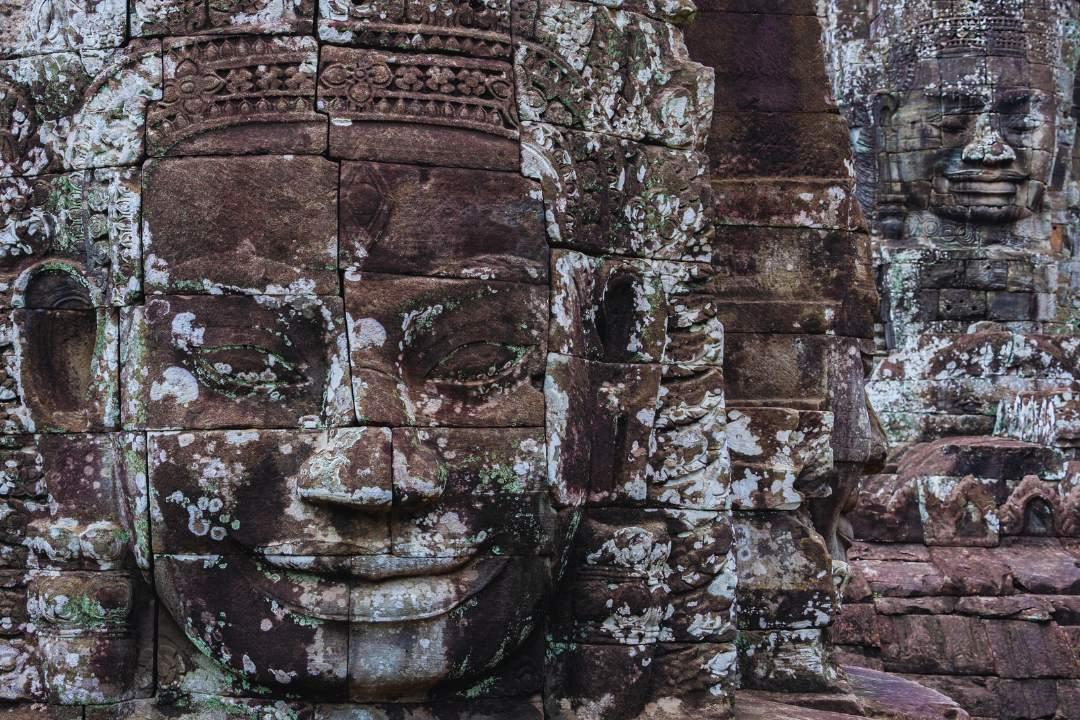Angkor Wat Preservation! Robots and Scientists Team Up to Rescue Angkor Wat
September 29, 2024

Table of Contents
Angkor Wat Preservation! Robots and Scientists Team Up to Rescue Angkor Wat
Discover how high-tech gadgets and smart people are working together to keep Cambodia’s coolest temple standing strong for years to come!
Why This Matters: Angkor Wat is over 900 years old! It’s one of the most amazing ancient buildings in the world. By taking care of it now, we make sure that kids in the future can visit and learn about Cambodia’s awesome history too!
Team Cambodia-Korea: Teaming Up to Make Angkor Wat Even More Awesome!
- Recent DevelopmentsNew Partnership: Cambodia has teamed up with South Korea for a big three-year plan to restore Angkor Wat. This project will not only fix the temple but also train local archaeologists and share new ideas about how to take care of cultural sites.
- Completed Work: Recently, workers finished restoring the southern central stairs and Naga balustrades (which are decorative serpent-like structures) on the ground floor of Angkor Wat. Before the repairs, these areas were unsafe, but now they are strong and ready for visitors.
- Future Plans: The Apsara National Authority (ANA), which manages Angkor Wat, is looking at other parts of the temple that need fixing. They want to make sure that everyone can enjoy this amazing place safely.
Latest News:
- Robot helpers join the team!
- Tiny flying drones are now checking hard-to-reach spots on the temple
- They take super close-up pictures to find cracks we can’t see with our eyes
- This helps fix problems before they get worse
- Trees get a trim
- Big trees near the temples can damage the stones with their roots
- Workers carefully cut back branches and remove some trees
- But they leave enough trees to keep the jungle feeling
- Tourists help out too!
- New paths keep visitors from walking on fragile areas
- People learn about the temple’s history and why it’s important to protect it
- Some tourists even volunteer to help clean up litter around the park
- Water worries solved
- Too much rain was damaging the old stones
- Engineers built clever drains to move water away from the buildings
- Now the temples stay drier and stronger
- High-tech mapping
- Scientists use lasers to make 3D maps of the whole temple complex
- These maps show tiny changes over time
- This helps spot problems early and plan repairs
What’s Next: Experts are always coming up with new ideas to protect Angkor Wat. They’re testing special coatings to protect the stones from weather and studying how climate change might affect the temples. There’s always something exciting happening to keep this incredible place safe!
Global Guardians: The International Dream Team Preserving Angkor Wat
Hold onto your passports, folks, ’cause we’re about to take a whirlwind tour of the global village that’s pitched in to keep Angkor Wat standing tall! It’s a tale of teamwork that’d make the United Nations look like a high school study group.
First off, let’s get one thing straight: preserving Angkor Wat isn’t just Cambodia’s pet project. Oh no, it’s like the world’s biggest potluck, and everyone’s bringing a dish to the table. We’re talking a smorgasbord of international cooperation that’s tastier than your grandma’s secret recipe casserole!
Let’s break down this preservation party, shall we?
- South Korea: These folks just inked a deal with Cambodia that’s got preservationists doing cartwheels of joy. It’s a three-year plan that’s more ambitious than a kid with a new Lego set. They’re not just patching up old stones; they’re training local archaeologists and sharing preservation tricks like they’re trading baseball cards.
- Japan: The OG of Angkor Wat preservation. They’ve been working on the Angkor sites since the 1990s, proving that when it comes to preservation, they’ve got more staying power than a marathon runner with rocket boots. Their projects have touched everything from the grand Bayon temple to the intricately carved Banteay Kdei.
- France: Ah, the land of baguettes and berets! They’ve been lending a hand since way back when, bringing their expertise in stone conservation faster than you can say “Oui, oui!” They’ve been instrumental in preserving the famous bas-reliefs that make Angkor Wat more detailed than a gossip column in a small town newspaper.
- Germany: Rolling up their sleeves and getting into the act, the Germans have been focusing on the Apsara dancers carved into the temple walls. These stone ladies have been shaking their groove thing for centuries, and thanks to German know-how, they’ll keep on dancing for centuries more.
- India: Bringing their A-game in archaeological expertise and restoration techniques. They’re like the wise old guru of the preservation world, sharing ancient wisdom with a modern twist.
But wait, there’s more! This international preservation party isn’t just about the big players. Universities from around the globe are sending students and researchers to Angkor Wat faster than you can say “field trip.” These bright young minds are bringing fresh ideas and enthusiasm that’s more infectious than a catchy pop song.
Now, you might be thinking, “That’s a lot of cooks in the kitchen!” And you’d be right. But here’s the kicker: it works! It’s like the world’s most successful potluck dinner, where every dish complements the others perfectly.
So how do they manage this global juggling act? Enter UNESCO, the master chef overseeing the whole operation. They’re making sure everyone’s singing from the same hymn sheet (or should I say, carving from the same stone?). Thanks to their coordination, all these international efforts fit together more smoothly than pieces in a jigsaw puzzle.
Let’s break down the international contribution in this table:
| Country | Expertise | Notable Projects |
|---|---|---|
| South Korea | Training, Technology | 3-year comprehensive preservation plan |
| Japan | Long-term restoration | Bayon Temple, Banteay Kdei |
| France | Stone conservation | Bas-relief preservation |
| Germany | Sculpture restoration | Apsara dancer conservation |
| India | Archaeological techniques |
Climate Change and Angkor Wat: Preservation in the Face of Environmental Challenges
As we explore the magnificent Angkor Wat complex, it’s crucial to understand the ongoing challenges faced by this UNESCO World Heritage site. One of the most significant issues confronting Angkor Wat today is climate change. This environmental phenomenon is not a distant threat but a present reality affecting the preservation of this ancient wonder.
Cambodia’s climate has been undergoing noticeable changes in recent years, with direct impacts on Angkor Wat and its surrounding ecosystem. Let’s examine the key climate-related challenges and the innovative solutions being implemented:
- Intensified Monsoon Seasons:
- Impact: Heavier rainfall is leading to increased erosion of the ancient stones.
- Risk: Structural integrity of the temples could be compromised over time.
- Extended Dry Periods:
- Impact: Prolonged droughts are causing the stones to crack and weaken.
- Risk: Accelerated deterioration of intricate carvings and bas-reliefs.
- Rising Temperatures:
- Impact: Higher temperatures are accelerating chemical reactions within the stone.
- Risk: Faster weathering and potential loss of surface details.
- Groundwater Fluctuations:
- Impact: Changes in the water table are affecting the stability of the foundations.
- Risk: Potential shifting or settling of structures.
The surrounding forest, an integral part of the Angkor ecosystem, is also experiencing changes due to climate fluctuations. This shift in the local flora can have cascading effects on the entire site’s microclimate and stability.
In response to these challenges, the Apsara National Authority, in collaboration with international partners, has implemented a comprehensive strategy to mitigate the impacts of climate change:
| Strategy | Description | Benefit |
|---|---|---|
| Advanced Drainage Systems | Installation of modern water management infrastructure | Reduces erosion and flood risks |
| Climate-Resilient Vegetation | Planting of species adapted to changing conditions | Maintains ecosystem balance and site integrity |
| Environmental Monitoring | Deployment of high-tech sensors throughout the complex | Enables early detection of potential issues |
| Historical Research | Study of original Khmer engineering techniques | Informs culturally appropriate preservation methods |
| Community Engagement | Collaboration with local residents for traditional knowledge | Enhances sustainable preservation practices |
One of the most promising aspects of these efforts is the global sharing of knowledge. Angkor Wat has become a case study for climate change adaptation in heritage sites worldwide. The strategies developed here are being shared with other UNESCO sites, contributing to the global effort in cultural preservation.
As we continue our tour, you’ll notice some of these preservation efforts in action. The balance between maintaining the site’s authenticity and implementing modern conservation techniques is delicate, but crucial for the long-term survival of Angkor Wat.
The preservation team’s proactive approach demonstrates that with innovation, collaboration, and determination, even the most daunting challenges can be addressed. Angkor Wat stands not only as a testament to the ingenuity of its original builders but also to the dedication of those working tirelessly to protect it for future generations.
As visitors, we play a role in this preservation effort. By understanding these challenges and the work being done, we can appreciate Angkor Wat not just as a relic of the past, but as a living monument adapting to the future. Let’s continue our tour with this perspective in mind, and I encourage you to ask questions about any preservation efforts you observe along the way.
So there you have it! Angkor Wat isn’t just some old building – it’s a cool mix of history and new ideas.
People from all over the world are working hard to keep it safe. They’re using neat stuff like flying robots and 3D maps to spot problems. And they’re fixing things in smart ways, like moving water away from the stones.
It’s pretty awesome how everyone is teaming up to take care of this amazing place. Maybe one day you’ll visit and see all the cool work they’re doing!
Recent Post
Get 30% Discount Now
Categories
Guided Tours

Private Siem Reap Airport SAI Transfers – Siem Reap Airport Pick-up or Drop-off, Just for You!
From: 30$
Shared SAI Siem Reap Airport Transfer – We depart every 1 hour!
From: 9$
Private Full-Day Siem Reap to Koh Ker & Beng Mealea Temple Tour
From: 75$
2-Day Angkor Wat Sunrise & Banteay Srei Grand Tour – Small Group Tours
From: 30$
2-Day Angkor Wat Temple Sunset and Floating Village Tour
From: 40$
3-Day Angkor Wat Sunrise, Banteay Srei and Floating Villages Tour – Small Group Tours
From: 50$